The Zine Revolution
By:
May 17, 2013

Recently, the University of Iowa Libraries acquired the Joshua Glenn Zine Collection — hundreds and hundreds of zines that I squirreled away during the so-called Zine Revolution (1984–1993, according to my eccentric reckoning), plus scores of letters from zine publishers, plus all sorts of ephemera related to the printing, distribution, and promotion of zines including my own: Luvboat Earth and Hermenaut. My collection — including such titles as 8-Track Mind, 2600: The Hacker Quarterly, ANSWER Me!, Baby Split Bowling News, babysue, The Baffler, Bananafish, Beer Frame, Ben is Dead, Bimbox, Bitch, Boiled Angel, bOING bOING, Bunnyhop, Bust, Chip’s Closet Cleaner, Crank, Crap Hound, DishWasher, Duplex Planet, Ersatz, FAT!SO?, Flatter!, Flipside, Forced Exposure, The Freakie Magnet, Giant Robot, Gourmandizer, Grand Royal, Heinous, Hey There Barbie Girl!, Hip-Hop Housewife, Holy Titclamps, I Hate Brenda Newsletter, Idiotooth, It’s A Wonderful Lifestyle, King-Cat Comix, Lizzengreasy, The Lumpen Times, The Match, Maximumrock’n’roll, McJob, Mommy and I Are One, Motorbooty, Murder Can Be Fun, Mystery Date, Organ & Bongos, Pagan’s Head, Plotz, Rollerderby, Scram, Sidney Suppey’s Quarterly and Confused Pet Monthly, Stay Free, Teenage Gang Debs, Temp Slave, Thrift SCORE, Tray Full of Lab Mice, Verbivore, Wandromedia, and X Magazine — will be added to the U. Iowa Libraries’ other excellent collections of zines and amateur press materials.
PREAMBLE: Introduction; and early pamphleteering | Proto-fanzines; and fanzines from the 1920s–30s | Fanzines from the 1940s–60s | Punk fanzines from the 1970s | The emergence of the zine as we know it! THE 1984–1993 ZINE REVOLUTION: Early 1980s zines from the Joshua Glenn Zine Collection, including: Cometbus, 2600: The Hacker Quarterly, CONTORT, The Mark of Cain, Why Do Men Kill Elephants?, Murder Can Be Fun | Queercore and Riot Grrrl zines, including: Teenage Gang Debs, Wandromedia, Holy Titclamps. | 1988 zines, including: Ben is Dead, Kooks Magazine, Kool Thangs, Pagan’s Head. | 1989 zines, including: Baby Split Bowling News, King-Cat Comics & Stories, Dishwasher. | Mike Gunderloy of Factsheet Five explains where the action is, circa 1990. | The secret origin of Luvboat Earth | Pagan’s Head, and the DIY scene in Allston, MA circa 1991 | The zines Rollerderby and Scram | The zines 8-Track Mind, ANSWER Me!, Bananafish, Boiled Angel, Chip’s Closet Cleaner, Crank, Ersatz, FAT!SO?, and Flatter! | The zines Thrift SCORE, Beer Frame, and Crap Hound | The zines Mystery Date, Hey There, Barbie Girl!, and Plotz | The zines Bust, Heinous, McJob, and Temp Slave | Idiot Tooth, Mommy and I Are One, The I Hate Brenda Newsletter, X Magazine | AFTER THE REVOLUTION: Hermenaut’s midwestern trek; Josh’s Utne Reader gig | Zinesters vs. journalists, a 1996 Q&A with Josh Glenn | Hermenaut’s S.L.A.C.K.E.R. project | Zine books — a harbinger of doom! | Letters to Hermenaut | Hermenaut snapshots | The final five issues of Hermenaut.
Here’s a sneak peek.
One of the very first zines (in the sense that the term came to be used — i.e., not a fanzine dedicated to science fiction or music or skateboarding) that I ever saw was The Mark of Cain, published at Boston Latin School in 1985 by my friends John Cradock and Ben Pomicter. The masthead (title logo) is a thing of beauty, and I enjoyed the comics and the rants. But what impressed me most about The Mark of Cain is how it inspired a thuggish football player to punch John in the mouth… because the guy (correctly) assumed that the message “Diana, will you please shut the kindly fuck up” inscribed onto one of the zine’s pages was a reference to his girlfriend. John and I were co-editors of the school’s literary magazine, which inspired no such visceral reactions! Not that I wanted to be punched in the mouth, but in some inchoate way I realized then and there that literary publishing would never provide me with the kind of immediate, personal feedback loop I craved.
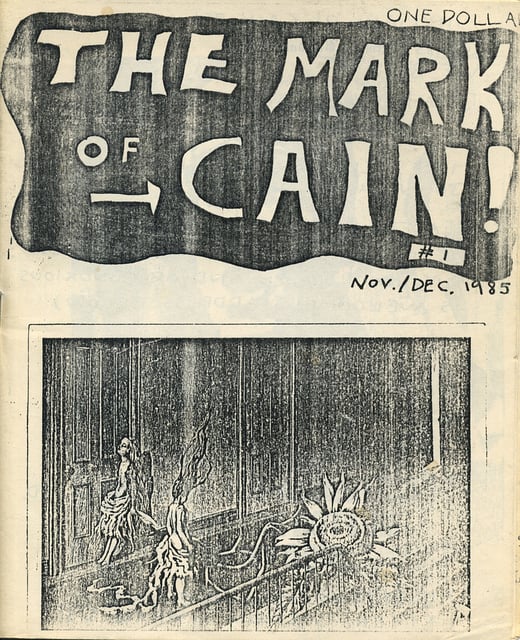
Below is another of the first non-fanzine zines that I encountered: Patrick Smith’s one-off publication Why Do Men Kill Elephants?, published c. 1986 in Revere, Mass. Pat was a friend of John Cradock’s from Boston’s post-punk scene — his earlier fanzine Alternative Focus was a pretty big deal. (He was one of the first to use “alternative” as a descriptor for the DIY rock music then emerging.) Why Do Men Kill Elephants? was a collection of Patrick’s non-music musings, fiction, poetry, collages and so forth. In the mid-1990s he started another excellent zine — of poetry, music writing, travel writing, and more — called Stargreen Review. NB: Although I’m sending my copy of Why Do Men Kill Elephants? to Iowa, I’m doing so with some anxiety because I strongly suspect that it’s the only copy still extant. There was a period in the early 1990s when Pat — now well known as the author of the brilliant website ASK THE PILOT — went around to his friends’ apartments and — in a fit of embarrassment — destroyed all copies.

I also have a large collection of David Greenberger’s Duplex Planet from the early 1980s. Greenberger’s is one of the best and most famous of all zines, and it’s another of the first zines I encountered. The Duplex nursing home was in my neighborhood, and Greenberger was friends with Jeff Ferris, who owned (and still owns) the local bicycle shop Ferris Wheels. I worked for Jeff when I was in high school, and in the summer of 1986 he bequeathed me his entire collection. Greenberger would later spin all sorts of media out of his Duplex Planet archive: records, books, comics. Amazing.
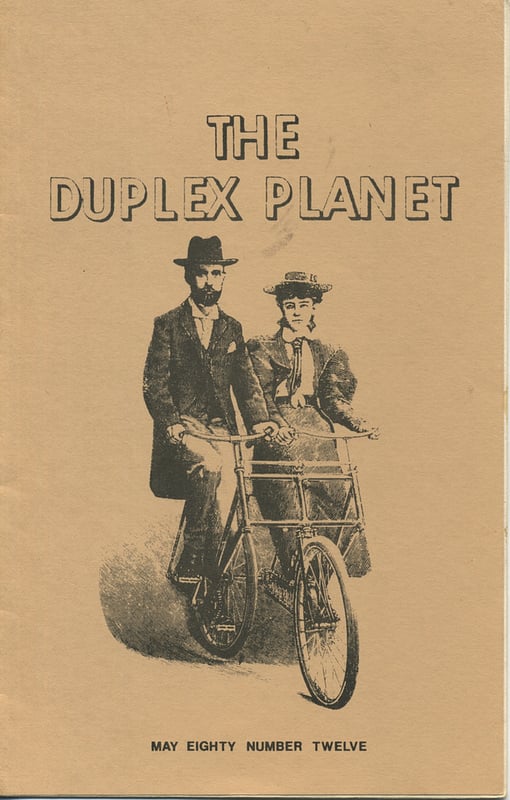
The zine-review publication Factsheet Five, which would in the mid-1980s play a key role in connecting zine publishers, was founded — as a two-page dittoed publication dedicated to science fiction fanzines — by Mike Gunderloy in 1982. Which suggests to me that although zine-like publications certainly existed before, say, 1984, the Zine Revolution didn’t start before that year. (Mike Gunderloy’s collection of over 10,000 zines and mail art is now held at the New York State Library in Albany, New York.) PS: The first round-the-clock Kinko’s opened in 1985.
My college friend Sherman Wilmott, who started publishing Kool Thangs in 1988, was the guy who told me that these things had a name: “zine.” (As zinester Candi Strecker once wrote, before the early ’80s you’d hand people your photocopied publication and say, “Here, take a look at, um, this thing I made”; it wasn’t until the mid-’80s that the term “zine” caught on widely. In a 1997 interview that appears in Re/Search’s Zines! vol. 2, Strecker officially confirms that the first time she ever used the word “zine” in print was in 1979.) In addition to starting a record store and producing great rock albums and making documentaries, not to mention publising the zine/city guide Kreature Comforts, Sherman would go on to spend the next quarter-century obsessively documenting the “low-life” musical history of Memphis, Tennessee; Kool Thangs was the beginning of that brilliant career.
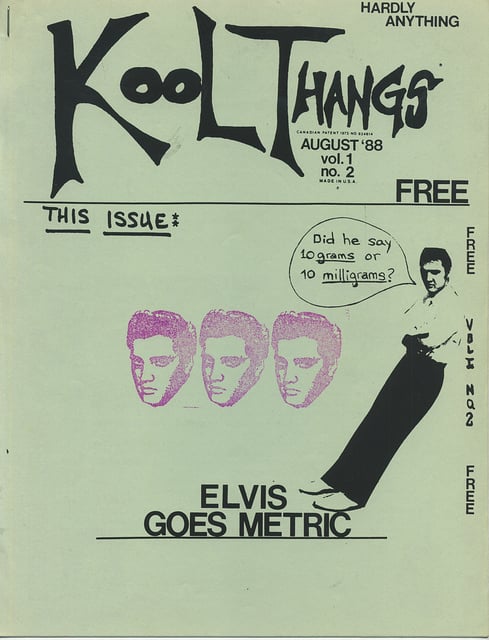
The years 1988–89 were the apex of the Zine Revolution; I discovered them that year, but didn’t start publishing my own zine right away. As is typical in DIY culture, I began as a fan and supporter and eventually, inexorably joined the movement as a fellow creator. In 1989, I visited Sherman in Memphis and spent a couple of days poring over his pile of zines. Back in Boston, I discovered a bookstore in the Allston neighborhood that carried zines — right next to the Fantagraphics and Semiotext(e) titles. Sherman turned me on to Factsheet Five, issues of which I read cover to cover during the 1989–1990 schoolyear. During the 1990–91 school year (my final undergrad year), I started Luvboat Earth with the help of friends — including Patrick Hubenthal, my girlfriend Susan, and (naturally) John Cradock. Luvboat Earth began with issue no. 9 because I was applying to grad school at the time, and discovered that I was expected to list my extracurricular activities. I had none! So I pretended that I’d been publishing Luvboat Earth for a couple of years; the first issue (#9) featured a list of back issues that were fictional and permanently unavailable. At last, the truth can be told.
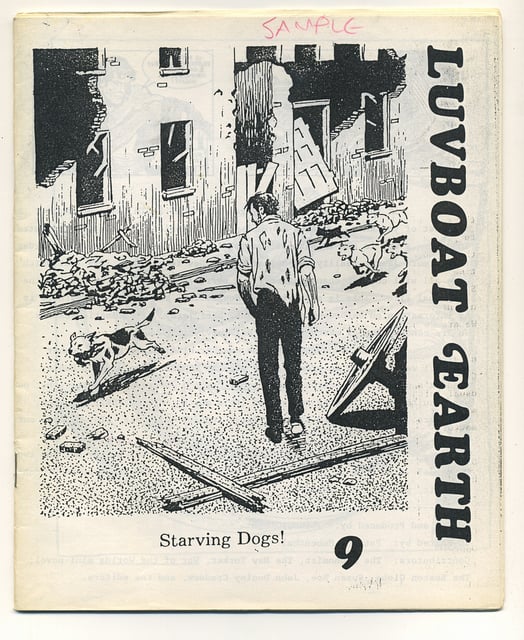
Shortly before I graduated from college in June of 1991, I started swapping copies of Luvboat Earth with one of the zinesters I’d discovered through Sherman: Pagan Kennedy, publisher of Pagan’s Head, in Allston. During my first year of graduate school, Pagan hired me as a freelance researcher to help her with her book Platforms: A Microwaved Cultural Chronicle of the 1970s, which was published in 1994.

Below is the 19th issue of Luvboat Earth. Published in March 1992, near the end of my first year of graduate school at Boston University, it is almost entirely devoted to reprinting the ZENMAN comics that I’d drawn in the margins of my school notebooks. It also includes poems by Rob Agredo, a travelogue by my brother Patrick, and an essay I wrote about hungover epistemology in the poetry of William Corbett. The issue’s introduction mentions that my fiancée Susan and I had just moved into an apartment building in Jamaica Plain (Boston) with a “groovy landlord”; Mimi Lipson would turn out to be a lifelong friend. PS: The resemblance between the cover of this issue of Luvboat Earth and The Mark of Cain is striking, isn’t it? I’d never noticed that before.
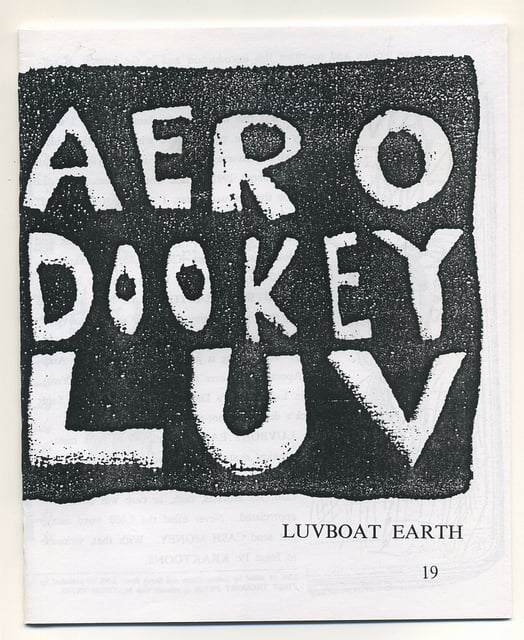
I started my zine Hermenaut in the summer of 1992 — at the tail end of the Zine Revolution. I’d graduated from college in the spring of ’91, with a useless degree in Religion, and immediately enrolled in the Master’s program for Sociology at BU. By the summer of ’92, I’d quit the Sociology degree program and had enrolled in a Master’s program for Teaching at BU. I had a lot of nervous energy, and I was also worried that if I didn’t pursue an academic career, I’d stop reading theory and philosophy. Hermenaut was the perfect solution.
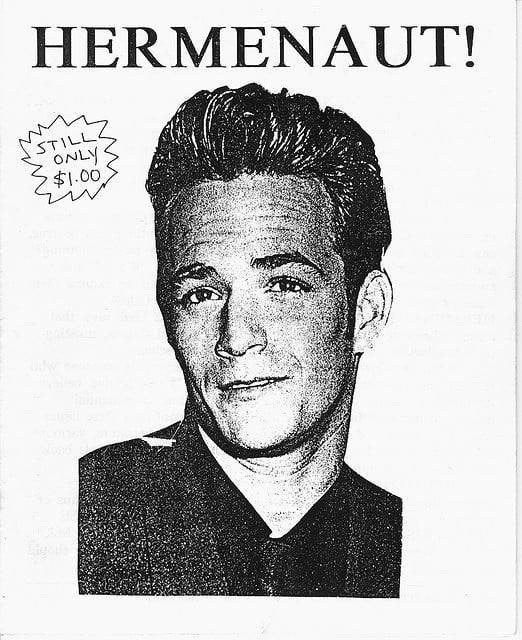
Hermenaut no. 1: Photocopied, b/w. 26 interior pages. Print run of 50.
COVER: Luke Perry of 90210. I was trying to make the cover look like SASSY. I thought that “Still Only $1” (for a 1st issue) gag was pretty funny, at the time.
HERMENAUT OF THE MONTH: Novalis.
ALSO: First installment of a series of essays I’d write on the topic of “S.L.A.C.K.E.R.,” in which I would explore the mainstreaming of subcultures, slacking vs. idling [I’d later write a book on that topic: The Idler’s Glossary], hermeneutic vertigo and irony, and generationism generally. Please note that if the Sociology department at B.U. hadn’t pooh-poohed my interest in these topics, I might have earned a Ph.D. after all.
While hanging out with Pagan at a Combustible Edison show at Green Street Grill in Cambridge, at some point in 1993, I met her friend Scott Hamrah. He liked Hermenaut, and I volunteered on the movie he and Chris Fujiwara were directing that summer. The next thing you know, Scott was co-editor of Hermenaut and his girlfriend Jennifer Engel, who became a good friend of mine, was the zine’s art director. Hermenaut no. 3 had a color cover (designed using Quark, instead of using scissors and glue), 26 interior pages, a print run of 100. Between the summer of ’93 and the summer of ’98, despite the fact that Susan and I moved to Minneapolis and then western Massachusetts for four years, Scott and Jennifer and I published a dozen glorious issues.
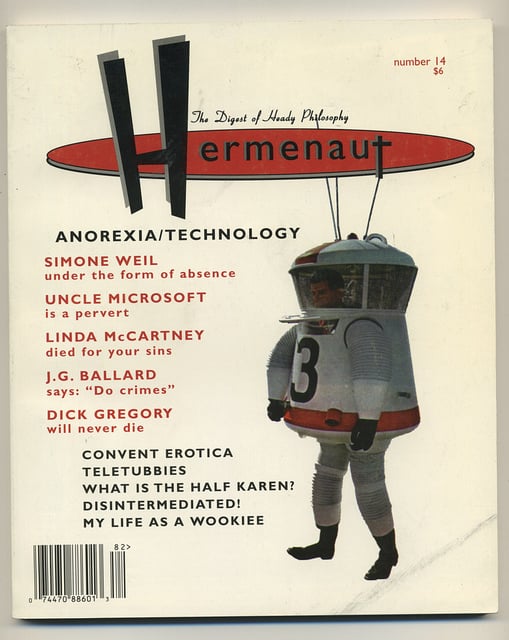
Thousands of zines were published after 1993, yet I date the Zine Revolution’s demise to that year. Why? Because in 1993, the Mosaic web browser gave everyone access to the World Wide Web; and in 1994, Justin Hall popularized the “web log.” Like Wile E. Coyote running off the edge of a cliff but not realizing it right away, we zinesters kept working furiously — it seemed like we were gaining traction in the culture! — but we were already obsolete. Over the course of the mid- to late 1990s, the Web had the same effect on zine publishing as it will in the next few years have on book and magazine publishing: Zine publishers were forced to choose between creating beautifully designed and printed artifacts or going entirely digital. The Web offered free publishing and distribution; after the Web happened, it didn’t make sense to spend a fortune printing and mailing zines when your potential audience could find the same sort of “content” online. Zines had to offer something that blogs couldn’t: a unique tactile and aesthetic sensation. Form became critical.
In the early 1990s a host of zines — Rollerderby, ANSWER Me!, Bust, Hermenaut — began sprucing up their act… to the scorn or outrage of those who equated DIY authenticity with crude packaging. A new age had begun, for zines — we were no longer in the Zine Revolution era. If the Zine Revolution was a mannerist phase of DIY publishing, this was a baroque phase — I consider neither of these terms a pejorative, by the way.
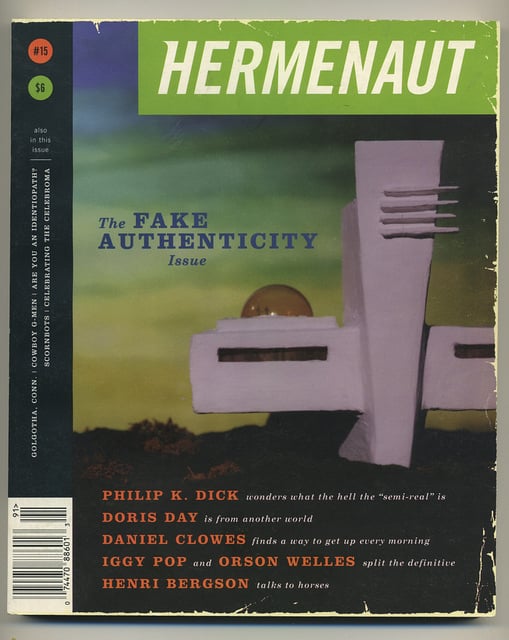
In the mid- to late-1990s, a number of zine books appeared. David Greenberger’s Duplex Planet: Everybody’s Asking Who I Was appeared in 1993, an Answer Me! collection in 1994, Pagan Kennedy’s Zine: How I Spent Six Years of My Life in the Underground and Finally…Found Myself…I Think in 1995, a Rollerderby collection by Lisa Carver in 1996, a Thrift SCORE book by Al Hoff in 1997, and also in 1997 A Girl’s Guide to Taking Over the World: Writings from the Girl Zine Revolution. Rather than representing the flourishing of the Zine Revolution, these attractively packaged and carefully edited collections mirrored the transformation of zines and signaled the Zine Revolution’s demise. The final efflorescence happened all at once: The Factsheet Five Zine Reader (1997) by R. Seth Friedman, Zines! vols. 1 (1996) and 2 (1997) by V. Vale, and The Book of Zines (1997), by Chip Rowe, Stephen Duncombe’s Notes From Underground: Zines and the Politics of Alternative Culture (1997), and Paul Lukas’s Inconspicuous Consumption: An Obsessive Look at the Stuff We Take for Granted, from the Everyday to the Obscure.
The first zine book was Mike Gunderloy and Cari Goldberg Janice’s The World of Zines, published by Penguin in 1992. Its Introduction concludes on a note that in hindsight is ironic: “The zine field is in the middle of a boom that’s been going on at least since the Seventies, and there is no end in sight.” Again, I don’t mean to suggest that people stopped publishing zines in 1993; to the contrary, there were tens of thousands of zines published after that date. (I published Hermenaut until 2001, going into credit card debt in the process.) By the mid-1990s, however, the Revolution — though most of us didn’t realize it until, say, 1999 — was moribund.
In addition to collecting zines by my friends, I collected zines by people who subsequently became my friends — like Lisa Carver (and Dame Darcy) of Rollerderby. My stack of Rollerderby issues is another thing I’m very reluctant to send to Iowa. But they’ll take good care of these… and make them available to interested readers who weren’t around in the 1990s and don’t realize how influential and important Rollerderby was in those days.
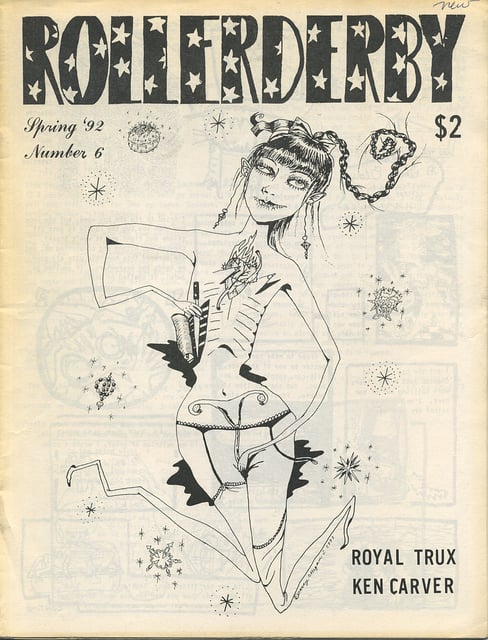
Another good friend I made via swapping zines is Lynn Peril of Mystery Date. Mining her incredible archive of “femoribilia,” Lynn has since published three terrific history/cultural criticism books with W.W. Norton: Pink Think: Becoming a Woman in Many Uneasy Lessons, College Girls: Bluestockings, Sex Kittens and Co-eds, Then and Now, and Swimming in the Steno Pool: A Retro Guide to Making It in the Office. It’s sweet to have a time-stamped documentation of the first encounter in our two-decades-long friendship.

Other zinesters from the 1990s who remain my friends to this day: Kim Cooper and David Smay (Scram), Jonathan Lethem and Shelley Jackson (Idiotooth), Annalee Newitz (Bad Subjects), Tony Leone (Commodity), Tom Frank (The Baffler), Pagan Kennedy (Pagan’s Head), Mark Frauenfelder (Boing Boing), Paul Lukas (Beer Frame), and Tom Hodgkinson and Matthew De Abaitua and Greg Rowland and James Parker (The Idler).
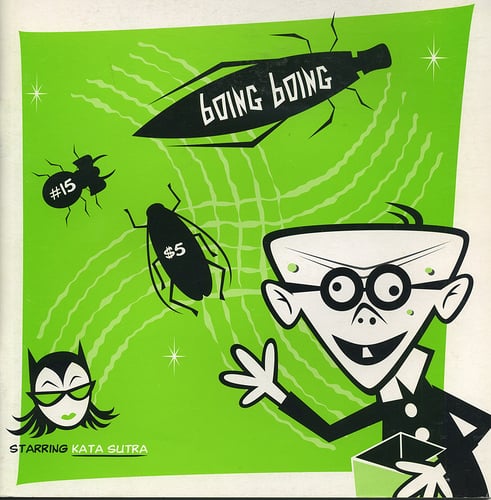
Hermenaut ended after 16 issues in 2001. But when I edited my first book, Taking Things Seriously, in 2007, I rounded up so many Hermenaut contributors and zinesters — John F. Kelly, Lisa Carver, Tom Frank, A.S. Hamrah, Patrick Smith, Chris Fujiwara, Paul Lukas, Mimi Lipson, Clarke Cooper, Kim Cooper, Ingrid Schorr, Paul Maliszewski, Lynn Peril, Michael Lewy, Tony Leone — that I privately re-titled the book Hermenaut no. 17. A few of the same folks — Matthew De Abaitua, Mark Frauenfelder, Shelley Jackson, Jonathan Lethem, Mimi Lipson, James Parker, Greg Rowland — appear in Significant Objects, which I co-edited in 2012 with Rob Walker, who, I discovered when started working on the project in 2009, had been a zinester and Hermenaut subscriber. So perhaps that book’s secret subtitle is Hermenaut no. 18…
¡Viva la Revolución!
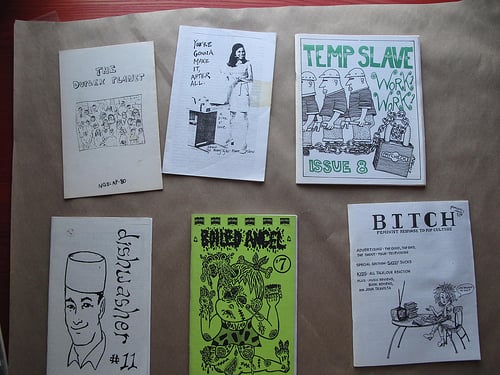
MORE FURSHLUGGINER THEORIES BY JOSH GLENN: TAKING THE MICKEY (series) | KLAATU YOU (series intro) | We Are Iron Man! | And We Lived Beneath the Waves | Is It A Chamber Pot? | I’d Like to Force the World to Sing | The Argonaut Folly | The Perfect Flâneur | The Twentieth Day of January | The Dark Side of Scrabble | The YHWH Virus | Boston (Stalker) Rock | The Sweetest Hangover | The Vibe of Dr. Strange | CONVOY YOUR ENTHUSIASM (series intro) | Tyger! Tyger! | Star Wars Semiotics | The Original Stooge | Fake Authenticity | Camp, Kitsch & Cheese | Stallone vs. Eros | The UNCLE Hypothesis | Icon Game | Meet the Semionauts | The Abductive Method | Semionauts at Work | Origin of the Pogo | The Black Iron Prison | Blue Krishma! | Big Mal Lives! | Schmoozitsu | You Down with VCP? | Calvin Peeing Meme | Daniel Clowes: Against Groovy | The Zine Revolution (series) | Best Adventure Novels (series) | Debating in a Vacuum (notes on the Kirk-Spock-McCoy triad) | Pluperfect PDA (series) | Double Exposure (series) | Fitting Shoes (series) | Cthulhuwatch (series) | Shocking Blocking (series) | Quatschwatch (series)
READ MORE essays by Joshua Glenn, originally published in: THE BAFFLER | BOSTON GLOBE IDEAS | BRAINIAC | CABINET | FEED | HERMENAUT | HILOBROW | HILOBROW: GENERATIONS | HILOBROW: RADIUM AGE SCIENCE FICTION | HILOBROW: SHOCKING BLOCKING | THE IDLER | IO9 | N+1 | NEW YORK TIMES BOOK REVIEW | SEMIONAUT | SLATE
